Spotlight > By Whistle Category > Variety Whistle Articles > 138 Vesta Whistles
Whistory
The story about vesta whistles starts with matches. They date back to Egyptian times. However, our subject comes into focus on friction matches. The first recorded sale of a friction match as we know today was by John Walker, Stockton-on-tees, England on April 7th, 1827. They were wooden splints, tipped with chemicals. In 1832, William Newton developed a process of combining threads of cotton and wax to make wax stem matches. They became known as “Vestas” named after the Roman goddess of fire and hearth. Thus, when you placed Vestas in a small container, it became common to refer to that container as a Vesta or Vesta case.
The need to keep unstable fire sticks dry and safe from accidental ignition stimulated the development of small metal cases named vestas. Keeping the matches safe, in turn derives the alternate name match safe. The description of Vesta or Vesta case is used more in Europe and match safe is used more in the United States along with the term match box.
What else beyond tobacco were match safes or vesta whistles used for?
Early needs of matches included stoves, lanterns, outdoor fires and finally cigars and pipes, then cigarettes and as smoking became socially fashionable, vestas proliferated. This era of vestas directly followed the development of friction matches.
This in turn brought about thousands of different vesta case designs and furthermore, vesta whistles of which we endeavor to focus. They range from very plain to functional, to very high quality and expensive. Silver and gold then being the best, ranging downwards to brass, nickel silver, tin, gun metal, bone, ivory, even wood and then on to cheaper early plastics.
Soon after these needs were established, they became a status symbol and the marketing of the various manufacturers appealed to this, producing from functional to very high quality models for the rich.
Variations of match safe or vesta whistles.
Subcategories are debatable such as “go to bed” used mid to late 19th century. The term “go-to-bed” was not used during this period. The first reference found for this was in the late 1960 as, “going to bed.” Later it started to appear as “go-to-bed.” Based on historical references the vesta socket was used to hold a vesta when sealing an envelope. The idea that rather than risk taking a lighted candle near to the voluminous fabric of a four-poster bed, the lighted match on the mantlepiece would burn for some 30 seconds, just long enough for the person to snuff out the candle and get into bed has not been verified.
Another was the addition of tinder cords. A tinder cord was used to save matches. A cord could be pulled through a shaft, lit, and shared saving matches and money. The top snuffer lid might be separate or included. The cord then could be pulled into the shaft, snuff it out and then used again.
Neil Shapiro, co-author of GORHAM MATCH SAFES, estimates that Gorham Manufacturing Co. (1865 to 1961) made 1,180 different varieties of match safes/vestas.
From functional to social status, the golden age for match safes was 1870 to 1920, their demise being the arrival of matchbooks and petrol lighters.
It appears best to separate whistle vestas into two large classes of (Class A-Brass and Class B-Silver). There are other materials, but these are dominant, especially collectible was silver as seen below.
Whistle Classification
| Category | tobacco related |
| Order | Sampson Mordan & Co. Gorham Mfg. Co. Mathew John Jessup Howard James George Wilkinson Frederick Edmunds A & J Zimmerman unknowns |
| Type | match safe vesta |
| Class | brass brass plated silver gold |
| Sub class | caricatures hunting appliques decorative supplies gadgets tinder cords |
Whistle Archeology
Types of whistle/vestas can be categorized by materials of gold, silver, brass, nickel silver, ivory, bone, tin, etc. Also, plain to ornamental.
PATENTS:
England:
- #342,813 1870
- #309,642 1897
USA:
- #1,166 1866/04/25
- #233,742 1880/08/21
- #344,370 1885/03/23
- #553,030 1895/04/17
Gold/silver precious metal images:
- Straight tube shaped and arched
- Gadgets ( i.e. compass, knife, hinged, pencil, ?? )
- Animal figurines
- Human figurines
- Oval tubes
Plated brass:
- Animal figurines
- Tube shaped hunting scenes
Variations:
- Tinder cords
Whistology
First class ( A ) to look at, is brass and plated brass.
caricatures have people and animals
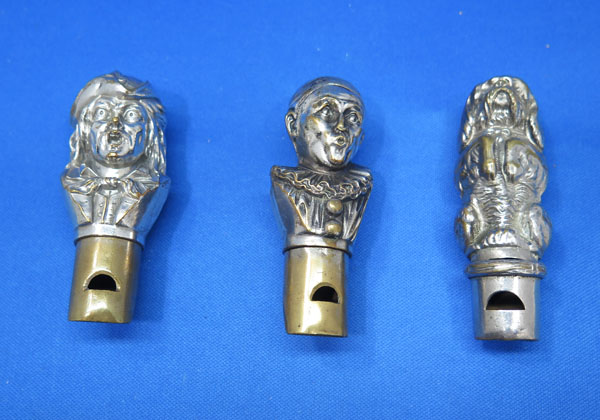
Photo Courtesy of George Sparacio
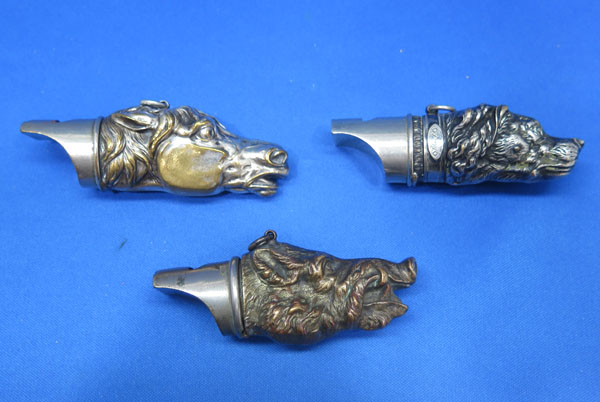
Photo Courtesy of George Sparacio
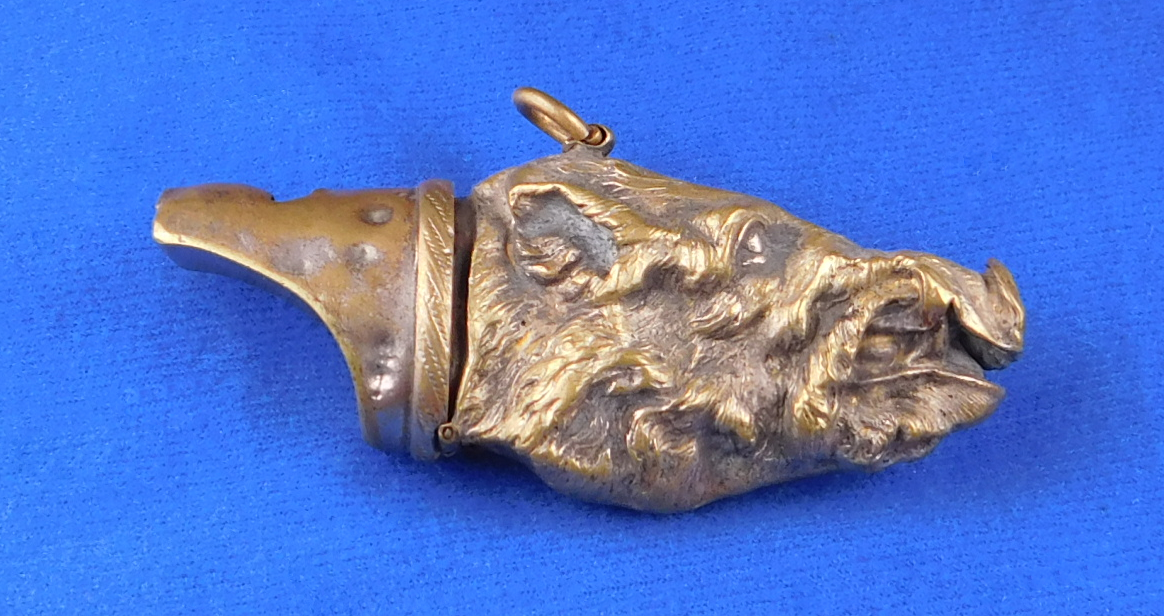
The Whistle Gallery Reference Collection
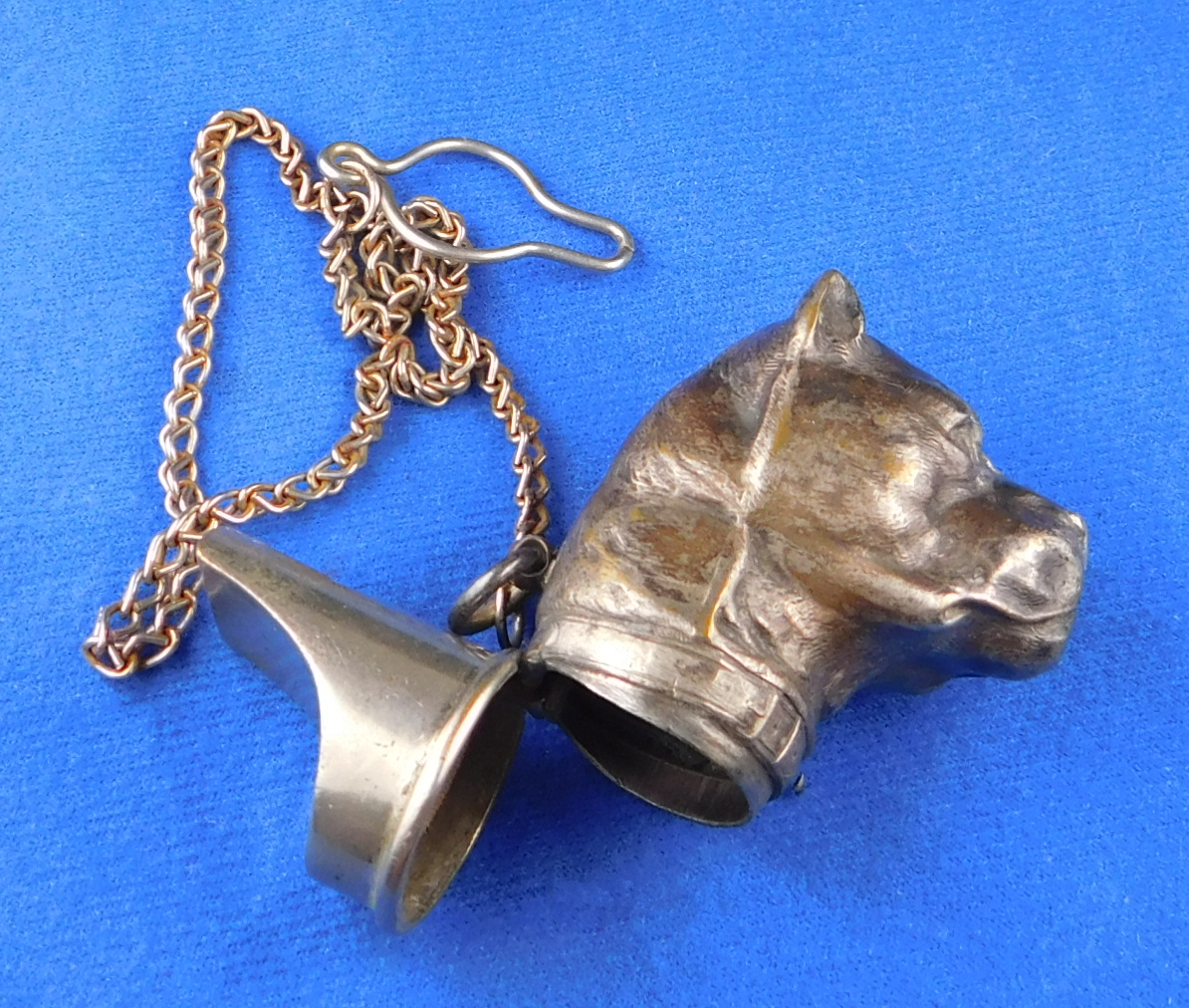
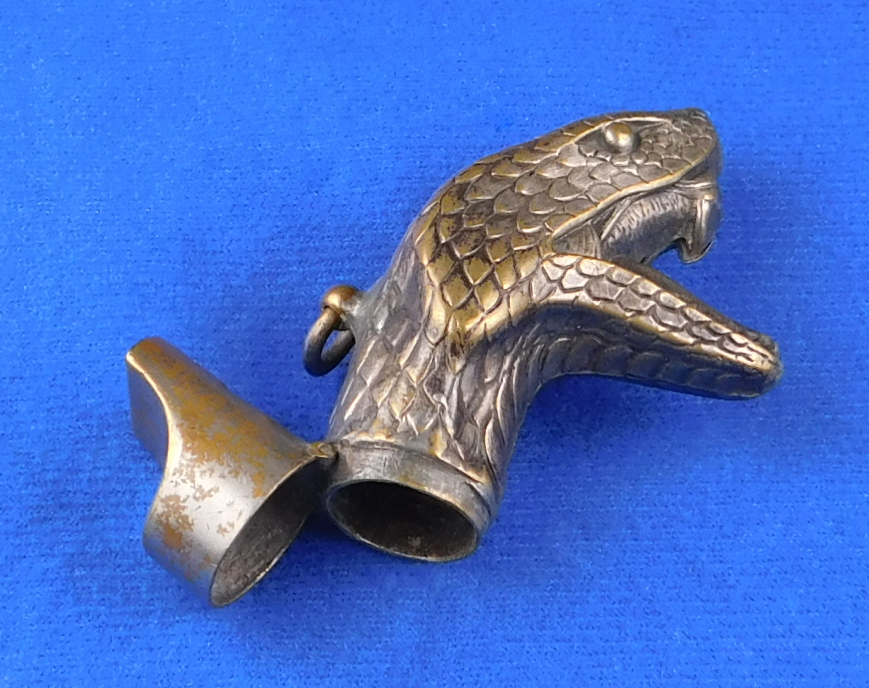
The Whistle Gallery Reference Collection
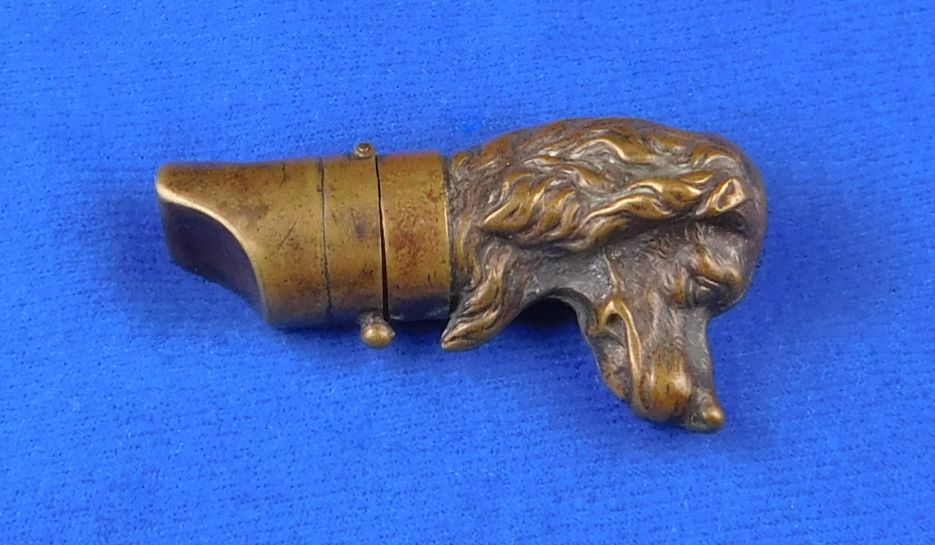
The Whistle Gallery Reference Collection – Modern copies in silver are found regularly.
Rare figural whistle vesta advertising D. Leonardt & Co., Ltd., pen nibs.
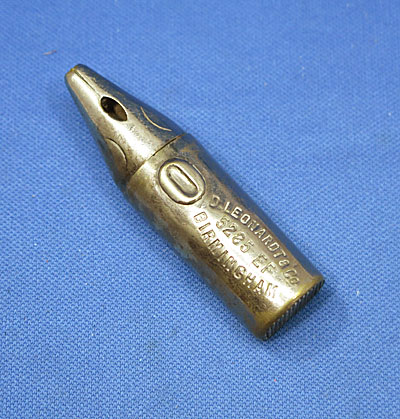

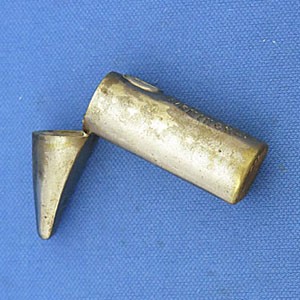
Photos Courtesy of George Sparacio
Next would be appliques of hunting scenes.
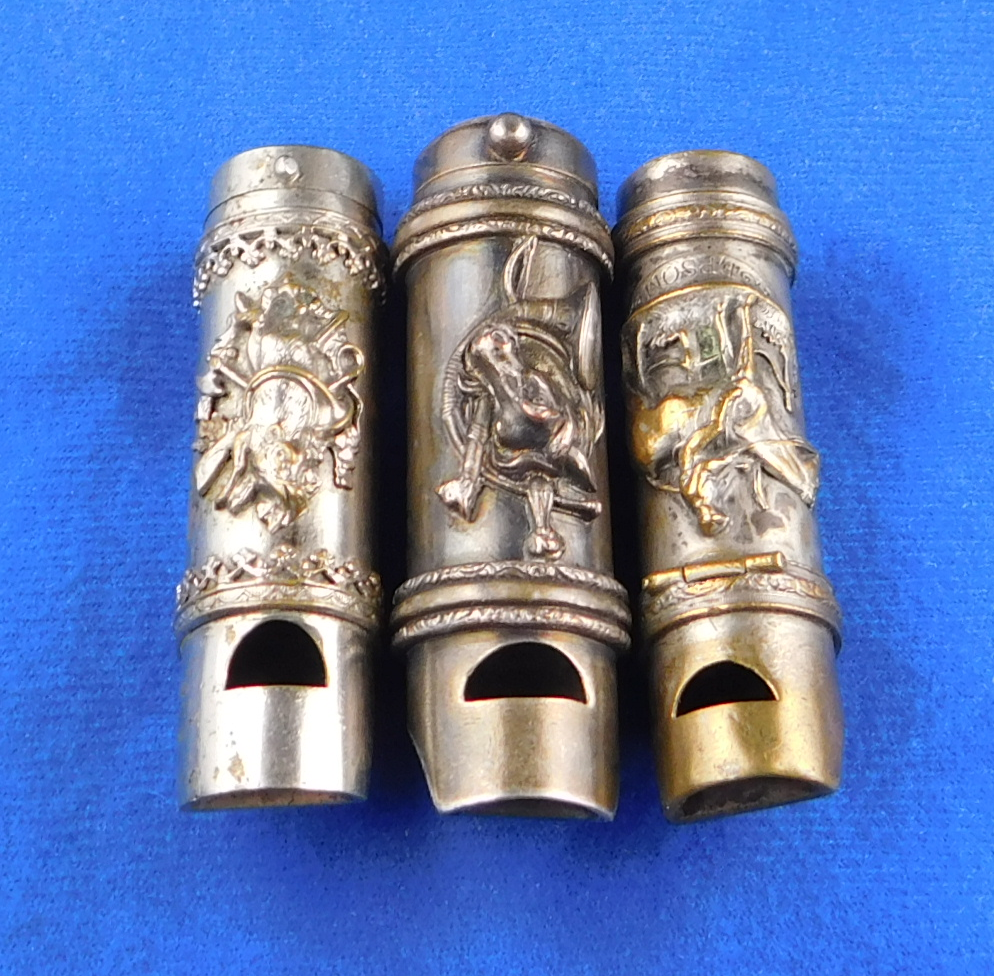
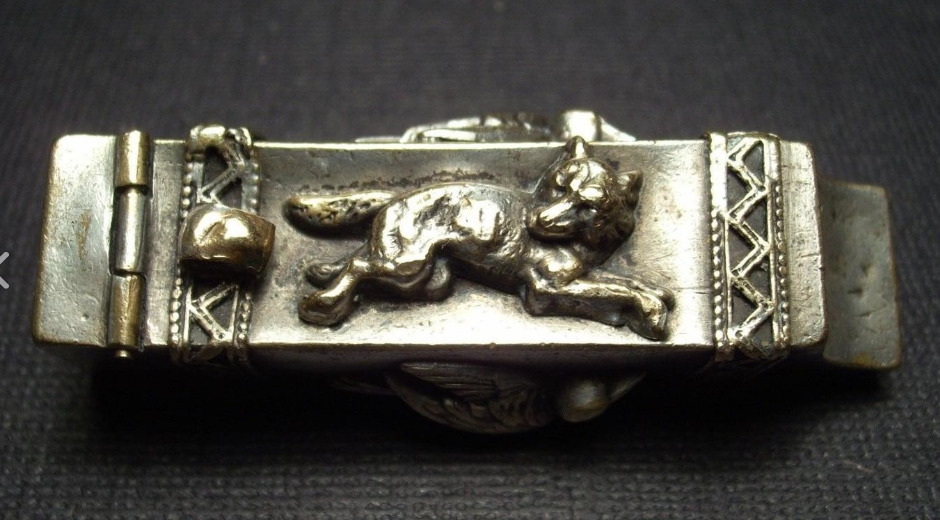
Photo Credit Unknown
Different strikers can help identify which country of origin, top or sides.
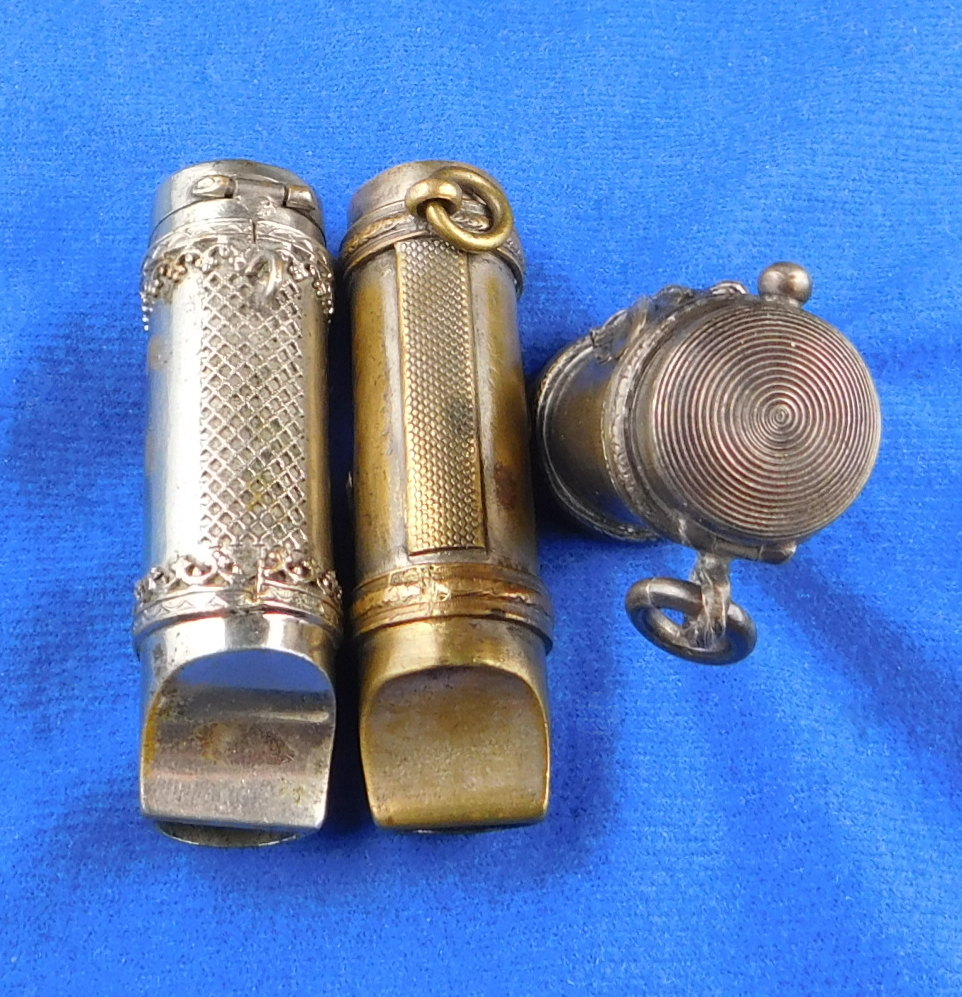
Plain brass and deco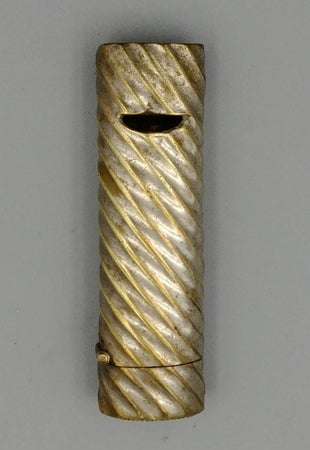
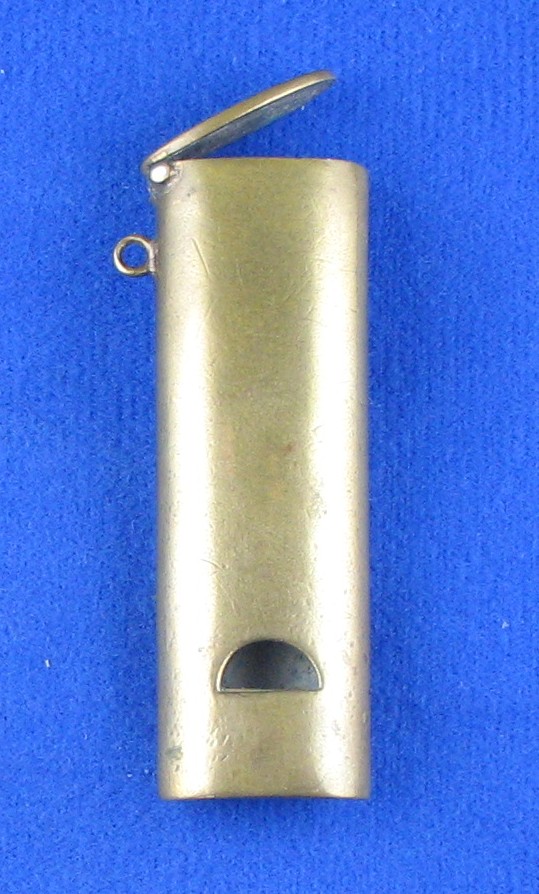
Class ( B ) silver overshadows all vesta workmanship ( perhaps gold should be included )
First set, Photos Courtesy of David Buck of Steppes Hill:
A & J Zimmerman, Birm., 1898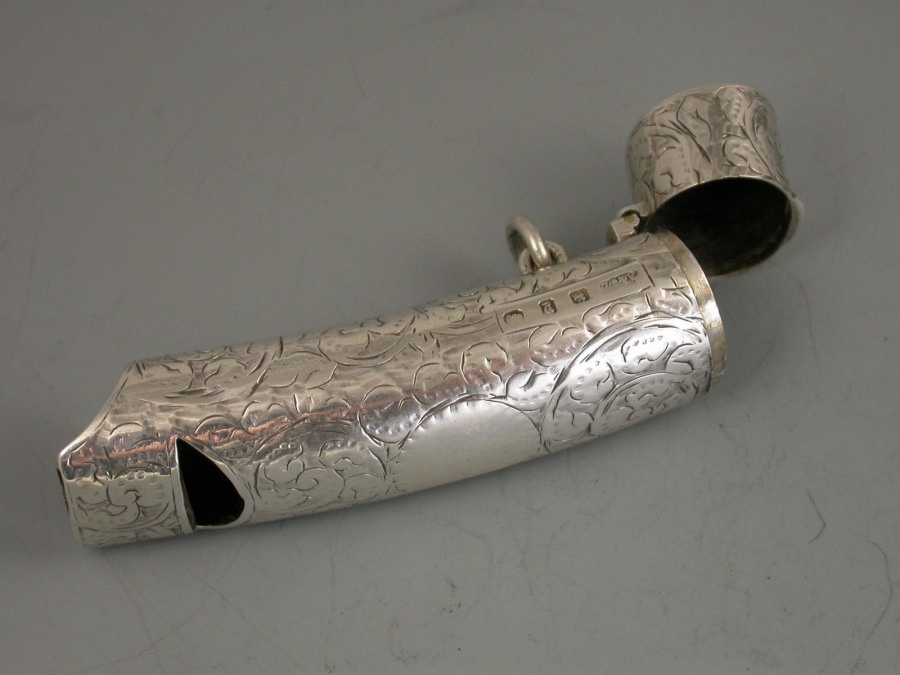
Frederick Edmunds, London 1894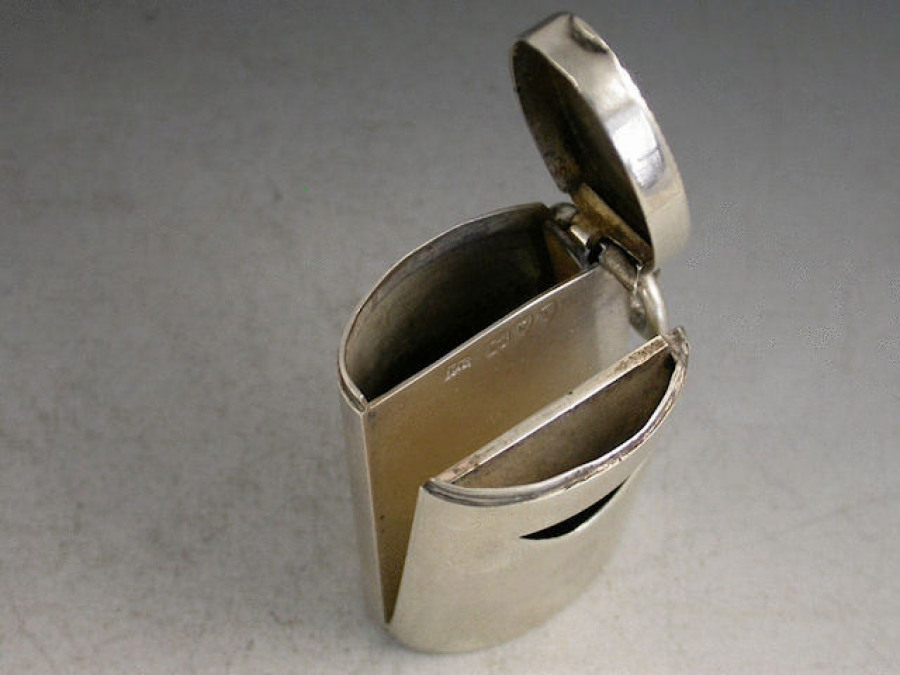
George Wilkinson, London, 1889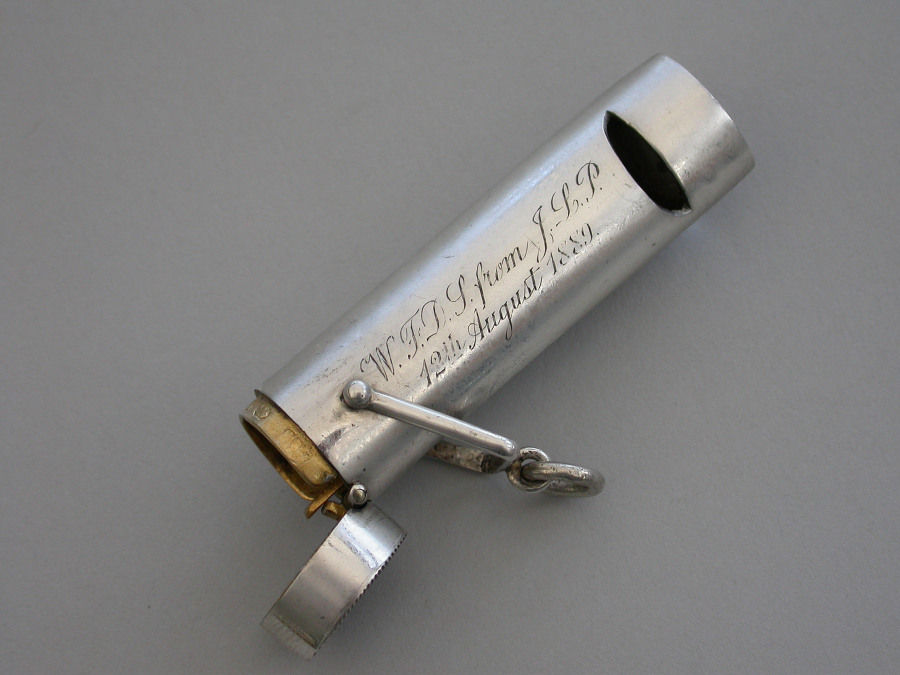
Mathew John Jessup, Birm., 1887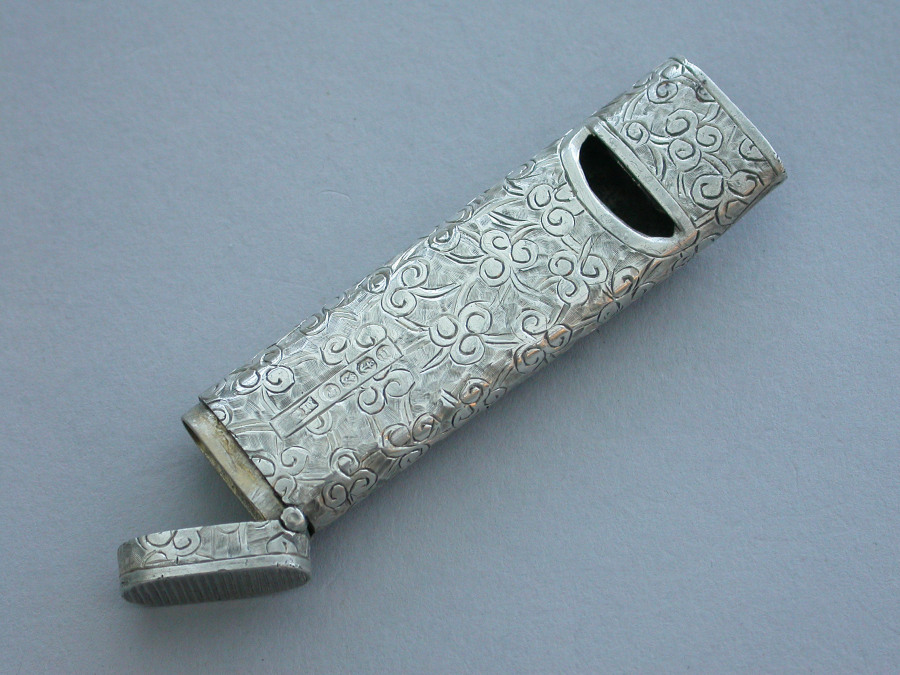
Sampson Mordan & Co., London, 1882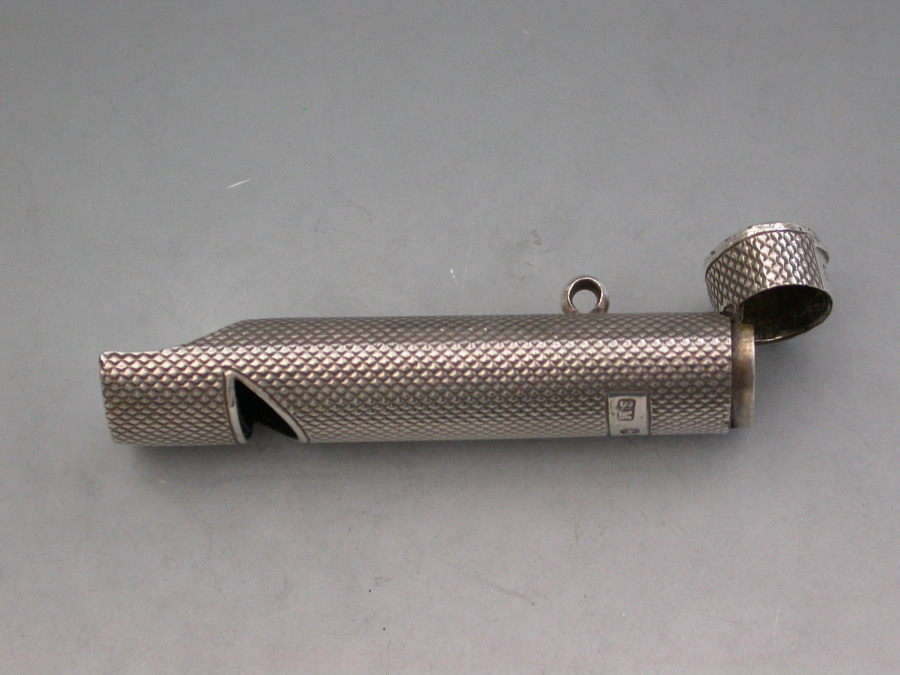
Frederick Edmunds, London, 1894 ( compass )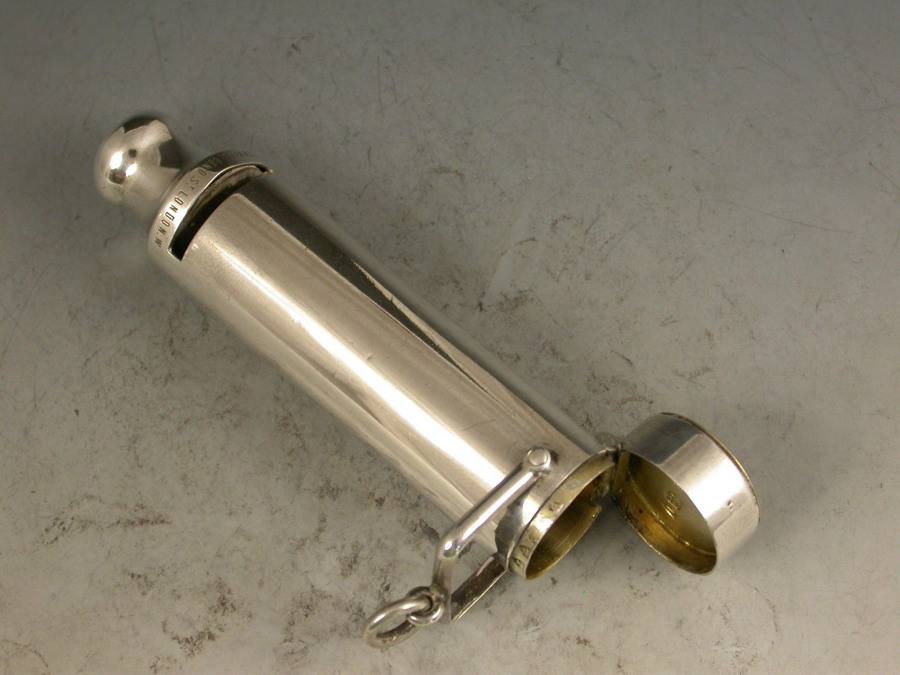
Frederick Edmunds, London, 1895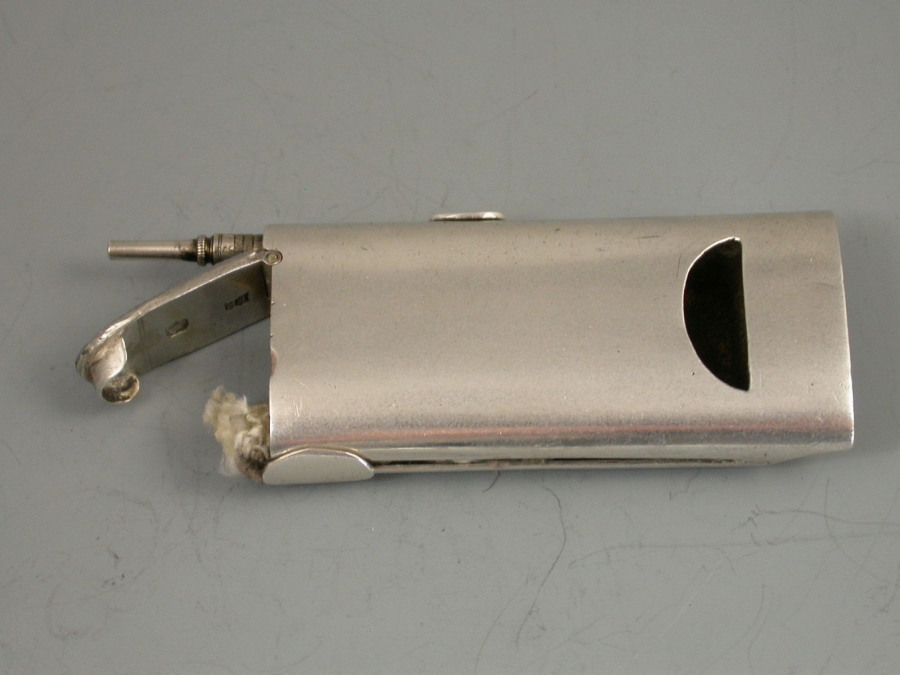
Howard James, Birm., 1890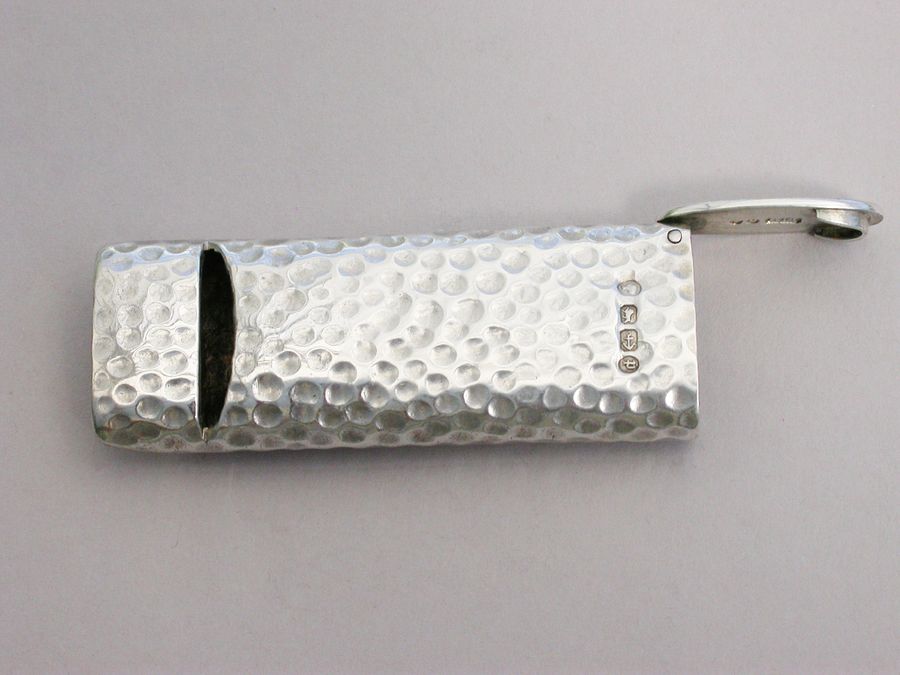
Sampson Mordan & Co, London, 1888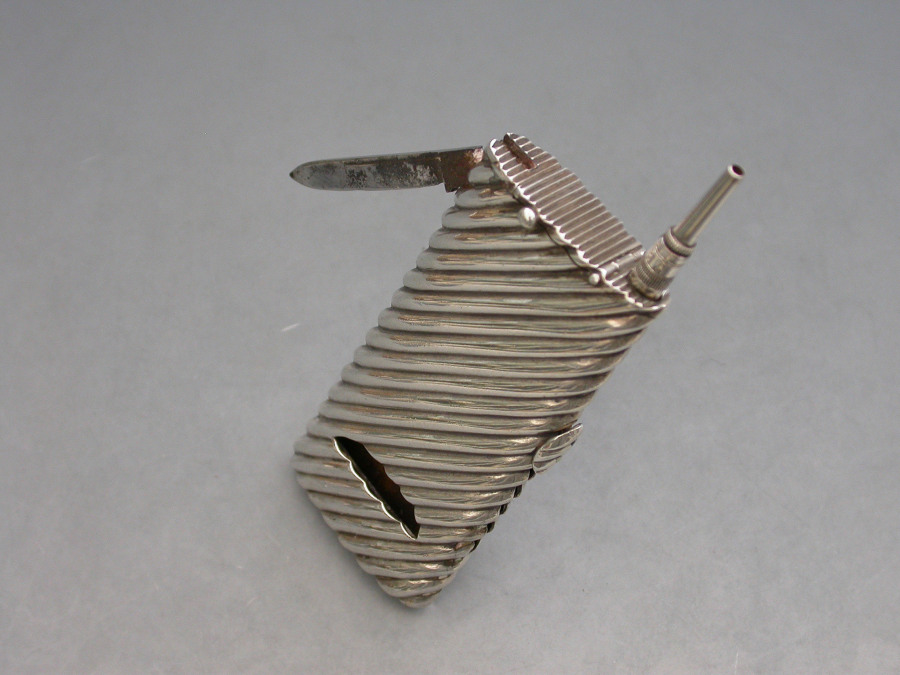
Sampson Mordan & Co. London 1894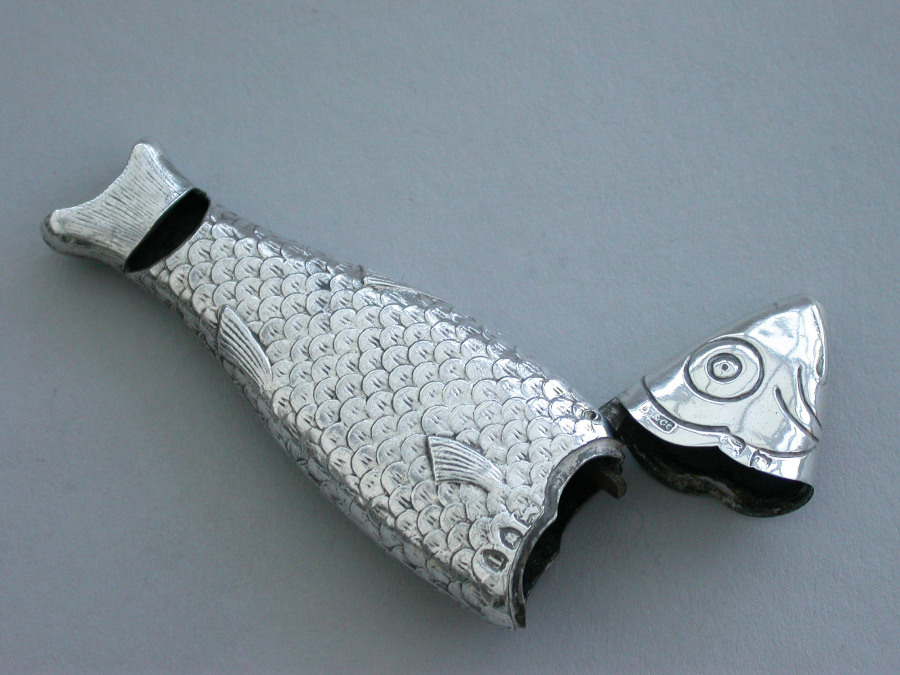
Second set, Photos Courtesy of George Sparacio
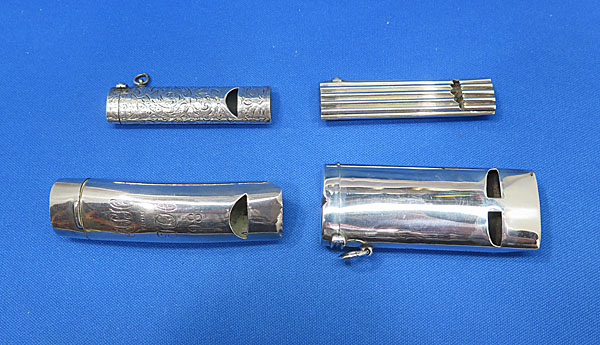
The following two are described as: Attached are photos of three additional whistle match safes. The photos of the 2 match safes were made by Gorham Mfg. Co., Providence, RI. Based on their 1878 cost records they made 3 different sterling ones, these are two of them. These are very rare. Photos Courtesy of George Sparacio
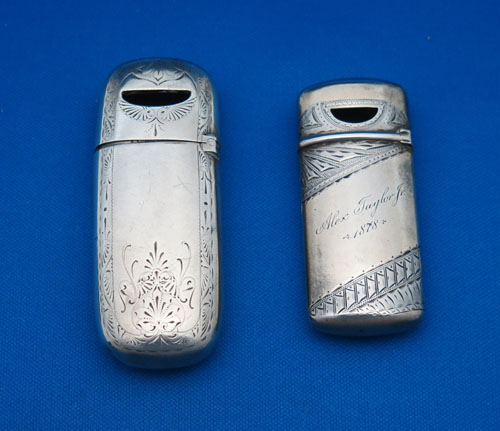
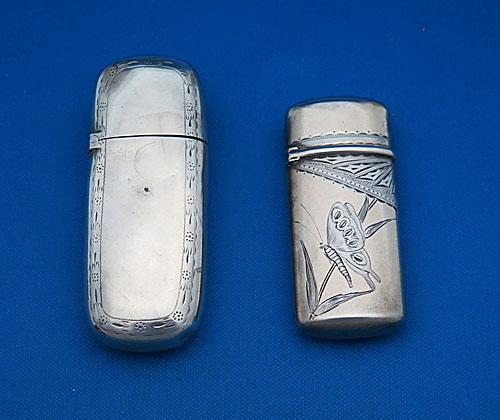
Below are catalog images from the Gorham Mfg. Co. archives showing the three different style whistle match safes offered prior to engraving. Gorham usually referred to a match safe as a match box.
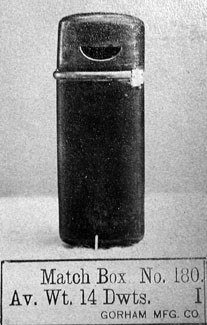
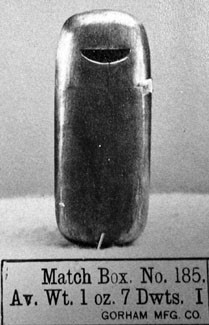
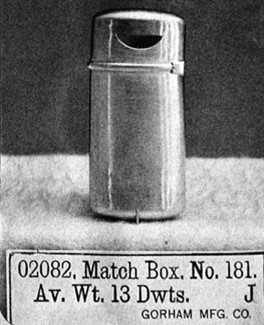
The following is European and in addition to the whistle it has a hole/tube for holding a tinder cord.
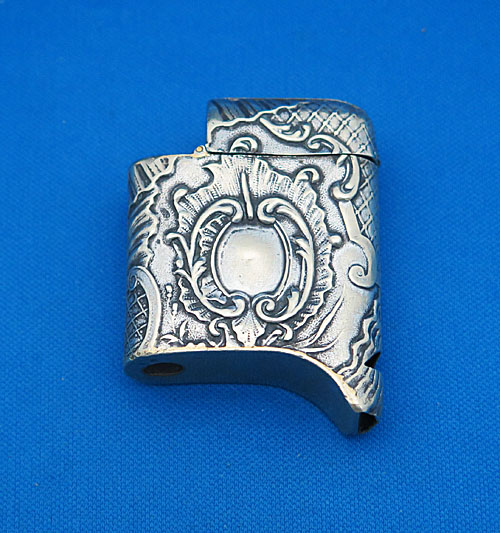
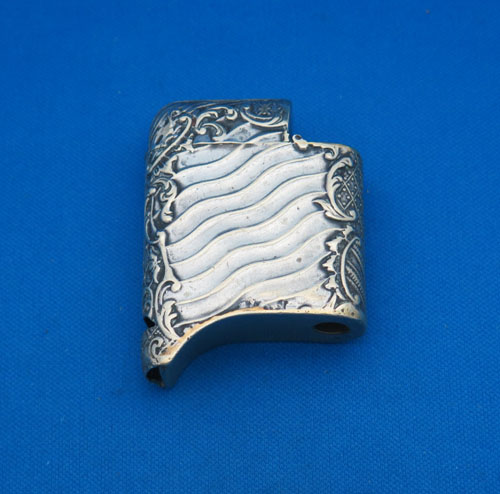
Photos Courtesy of George Sparacio
Conclusions
Vestas or Match Safes in general have been appreciated and researched by collectors for many years. However, as whistle enthusiasts enter the field with the combinations here described, there is room for concentrated study. So far, the UK, USA and France have dominated this arena. Hopefully other countries will contribute to this engaging category of whistle collecting.
A special thanks to our guest editor George Sparacio.
TWG
Drafted November 11, 2022
Posted January 5, 2023
Bibliography:
https://www.collectorsweekly.com/tobacciana/match-holders#:
https://en.wikipedia.org/
https://www.theknohlcollection.com/
http://www.matchsafescholar.com/
https://www.realorrepro.com/ — fakes
https://antiquesandauctionnews.net/ — fakes
https://matchsafe.us/ — literature list of one dozen reference books
http://www.matchsafescholar.com/articles/A%20BRIEF%20HISTORY%20OF%20GORHAM%20MATCH%20SAFES.pdf
– Gorham charts
http://www.matchsafescholar.com/articles/Essay%20on%20Go-To_Bed.pd
ftps://www.realorrepro.com/article/Match-Safe-Reproductions
© – All photos with blue background property of The Whistle Gallery reference collection. Please contact The Whistle Gallery for permission of use of any website content. Spotlight articles are copyrighted. Please contact The Whistle Gallery for permission of use of any website or Spotlight article material written or otherwise. Use of photos without authorization is prohibited.











